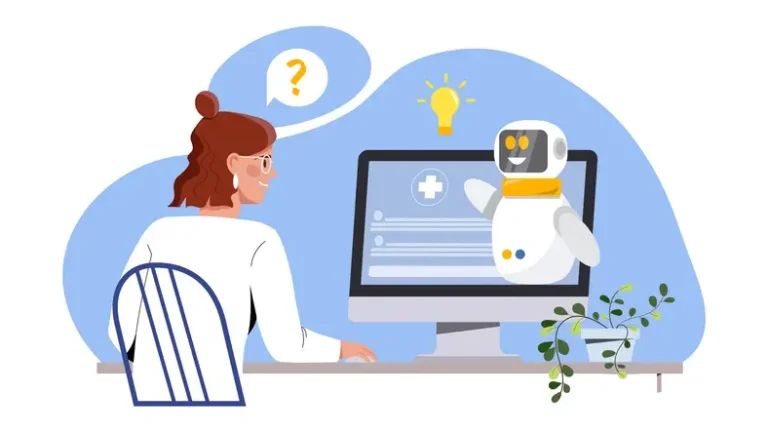Empower your users, reduce churn, and accelerate time-to-value with these 7 key principles of SaaS onboarding

SaaS onboarding is the backbone of any successful software-as-a-service product. From the moment a new user signs up, your onboarding process shapes their first impression, dictates how quickly they adopt key features, and establishes whether they’ll stick around long-term. In a highly competitive market, it’s no longer enough to launch your product and hope for the best. Companies need to proactively guide new users through an engaging, frictionless experience that highlights immediate value.
That’s why a well-crafted SaaS onboarding strategy is essential. It ensures that users aren’t overwhelmed with irrelevant information, that they feel confident using core features, and that they can easily reach their “aha!” moment.
Plus, onboarding doesn’t end after a quick tour. It continues to evolve along with your product, helping existing users stay informed about software improvements, feature updates, and added benefits. In this article, we’ll dive into the seven fundamental principles that can help you design, implement, and refine an onboarding process that keeps churn at bay and fosters long-term loyalty.
In this article

Why SaaS onboarding matters
A solid SaaS onboarding process helps new users discover the core features, understand the real value, and incorporate your software into their daily routine. It’s also an opportunity to demonstrate your company’s commitment to customer success from the very start.
Often, when users first encounter a new SaaS product, they have specific goals in mind. They might want to solve a particular problem, streamline a process, or enhance collaboration. An effective SaaS onboarding strategy lets them achieve these goals quickly, preventing frustration and minimizing the chance they’ll abandon your product for a competitor.
Read an in-depth explanation of onboarding in our quick guide to user onboarding article.
What is SaaS onboarding?
SaaS onboarding is the process of guiding new users to successfully adopt and use a cloud-based product. Through concise tutorials, tooltips, checklists, and helpful prompts, you can show users exactly how to benefit from key features.
A robust SaaS onboarding plan also includes ongoing support for existing users, especially during software updates or as new features roll out. The end goal? Helping users quickly recognize the software’s value so that they remain engaged, reach their “aha!” moment sooner, and become loyal customers.
Research has shown that 55 percent of users return a product if they don’t understand how to use it, emphasizing the importance of a thorough, user-focused onboarding flow.
Why having a proper SaaS onboarding is important
User onboarding can be your product’s key driving force for:
- Feature adoption: Showcasing how each feature solves a user’s problem.
- User activation: Transforming a curious trial-user into an active, engaged user.
- Customer retention: Reducing churn by making your product indispensable.
An excellent SaaS onboarding experience:
- Creates a frictionless first impression.
- Builds trust between you and your users.
- Encourages users to incorporate your product into their daily lives.
- Keeps them returning to use your solution, month after month.
In 2024 and beyond, users have grown to expect intuitive onboarding experiences. Anything less than stellar — whether outright negative or simply mediocre — can drive them away. As a result, not having a strong SaaS onboarding process is no longer an option for any business serious about customer success.
SaaS onboarding principles
There isn’t a single, universal blueprint for SaaS onboarding because every product, audience, and brand is different. However, the following seven principles serve as a foundation for building a seamless user onboarding journey.
1. Clarity: Understanding your user’s pains, drains, and gains
Clarity is the foundation of any effective SaaS onboarding strategy. It begins with having a deep understanding of your product’s unique value proposition and how that offering aligns with your users’ needs. By pinning down what makes your SaaS product truly indispensable, you can better define an onboarding flow that resonates with your audience. Specifically, you should be able to answer:
- What makes your SaaS product great?
Think about the core features and differentiators that set your product apart in a crowded market. - Why should users stick around long-term?
Consider how your product continues to deliver ongoing value, well beyond the initial sign-up. - How does your product solve their problems?
Identify the main pain points your product alleviates so you can highlight them early in the onboarding process.
To clarify your offering further, map out the pains, drains, and gains of your target audience:
- Pains: The challenges or problems users want to solve with your product. Is it saving time, reducing errors, or streamlining collaboration?
- Drains: Any obstacles that make the user experience frustrating — whether it’s a complex UI, tricky setup, or a steep learning curve. Pinpointing these “drains” helps you plan your onboarding steps to reduce friction.
- Gains: The measurable benefits or positive outcomes your product delivers once users get over the initial learning hump—like increased productivity, better communication, or cost savings.
When you have a crystal-clear understanding of your users’ pains, drains, and gains, you can craft an onboarding flow that addresses each point at the right time. Not only does this ensure you’re delivering relevant content and guidance, but it also helps users realize immediate value. The result? A more intuitive, engaging onboarding journey that sets the stage for long-term user satisfaction—and keeps customers coming back for more.
2. Consistency: Stay true to your brand
When it comes to SaaS onboarding, consistency goes far beyond matching colors and logos—it’s about creating a seamless, cohesive experience that resonates with users at every touchpoint. If your onboarding flow feels disconnected from the rest of your platform, new users may question your product’s credibility or become confused by conflicting design and messaging. By ensuring that branding elements, tone, and visual cues remain uniform, you build familiarity and trust right from the start.
Here are key considerations for maintaining brand consistency during SaaS onboarding:
- Design style guides
- Develop comprehensive guidelines covering typography, color palettes, iconography, and layout principles.
- These guides act as your “visual DNA,” making it easier to keep your onboarding screens and instructional pop-ups in sync with the overall look and feel of your product’s UI.
- Naming conventions
- Stick to clear, descriptive labels for menus, buttons, and features. Users appreciate familiar industry-standard naming (Jakob’s Law), as it reduces cognitive load.
- Avoid inventing overly creative or obscure terms for common actions, which can lead to confusion and slow down the onboarding process.
- Tone and voice
- Use the same approachable, friendly style in your onboarding text that you use in your product copy, marketing materials, and support documentation.
- Maintaining a uniform voice across all touchpoints reassures users that they’re interacting with a single, reliable brand—and not multiple disconnected sources.
A frictionless experience is far easier to achieve when everything feels recognizable and cohesive, from your initial product tour to every tooltip or in-app message. By presenting a unified brand front, you minimize user confusion and keep them focused on what truly matters—discovering the value of your SaaS product and integrating it into their daily workflow.
3. Relevancy: Focus on the right information at the right time
Relevancy might be the single most crucial concept in any SaaS onboarding experience. Bombarding new users with every possible feature and piece of information all at once can lead to confusion, frustration, and ultimately high abandonment rates. Instead, you want to deliver only the right information at the right time, allowing users to build confidence steadily and naturally.
- Front-loading pitfalls: While it’s tempting to showcase your product’s full capabilities from the get-go, overloading first-time users with a barrage of tutorials or pop-ups often backfires. Faced with too much new information, people are more likely to log out—and never come back.
- Keep it short & sweet: Research shows that shorter onboarding tours yield higher completion rates. For instance, tours with just three steps enjoy a 72% completion rate, whereas tours with seven steps plummet to 16%. This data underscores how critical it is to present your onboarding in digestible chunks.
- On-demand guidance: Rather than forcing all details upfront, let users explore your product with in-context assistance such as tooltips, checklists, and hover prompts. This way, they encounter guidance only when it’s immediately relevant, like the moment they click on a new feature for the first time.
By embracing this user-centric mindset, you can prevent information overload and keep users meaningfully engaged throughout their onboarding journey. When you deliver key insights precisely when they’re needed, users feel more in control, grasp features more intuitively, and are far more likely to stick with your product for the long run.
4. User autonomy: Allow users to control their path
User autonomy is a fundamental UX principle that applies just as strongly to SaaS onboarding. Instead of forcing everyone through a rigid, one-size-fits-all tutorial, you want to provide flexible pathways that cater to individual needs and learning styles. When users feel they have control over how they discover and engage with your platform, they’re far more likely to stick with it.
- Pause or skip
- Give users the option to pause or skip any introductory tutorials if they’re already familiar with certain features or prefer to explore independently. Nothing frustrates seasoned users more than having to sit through instructions they don’t need.
- Go back or redo
- Make it simple to revisit onboarding steps or tutorials. A dedicated “Help & Tutorials” section, for instance, allows users to refresh their knowledge without having to search through support articles or external FAQs.
- Choose their learning path
- Recognize that not everyone learns the same way. Some users might thrive with a detailed, guided tour, while others want to jump right in and experiment. Consider offering multiple formats so each user can pick the method that suits them best — such as a quick-start video, an interactive checklist, or step-by-step tooltips.
By empowering users to customize their onboarding experience, you foster a sense of ownership that directly impacts their early impressions of your product. This freedom not only boosts initial satisfaction but also paves the way for deeper engagement and loyalty, as users feel in control of how and when they master new features.
5. Accessibility: Equal experience for all
Accessibility is more than just a checklist item. It’s a foundational commitment to ensuring every user can fully engage with your product. By prioritizing accessible SaaS onboarding, you not only expand your potential user base but also demonstrate empathy and respect for individuals with varied abilities. When users feel included from day one, they’re far more likely to develop loyalty and trust.
Here are key elements to keep in mind when building an accessible onboarding flow:
- Color contrast
Make text, icons, and interactive elements easy to see by following guidelines like WCAG (Web Content Accessibility Guidelines). Adequate contrast is crucial for visually impaired users who rely on clear distinctions between foreground and background colors. - Text scaling
Allow users to resize text comfortably within your app. This practice is especially helpful for those with low vision or reading difficulties. - Keyboard navigation
Ensure that all forms, buttons, and navigation elements can be accessed without a mouse. A fully keyboard-accessible interface empowers users who rely on screen readers or other assistive devices. - Language options
If your SaaS caters to an international audience, consider offering multilingual onboarding or using straightforward language that’s easily translatable. This step not only accommodates non-native speakers but also helps break down language barriers. - Additional assistive features
Think about alt text for images, ARIA (Accessible Rich Internet Applications) labels for interactive components, and logical heading structures. These details help screen-reader users fully understand your interface and navigate effortlessly.
By proactively incorporating accessibility measures at the onboarding stage, you make it clear that your platform values inclusivity and strives to deliver a consistent, user-friendly experience for everyone, regardless of their abilities or circumstances.
6. Continuity: Onboarding is an ongoing journey
SaaS onboarding doesn’t end once a user signs up or completes a product tour. Because SaaS products are ever-evolving– introducing new features, rolling out updates, and responding to changing user needs — it’s crucial that your onboarding strategy evolves, too. Continuous education keeps both new and returning users up to speed, paving the way for deeper engagement and long-term loyalty.
- Feature updates
- Mini-guides and tooltips: Whenever you introduce or overhaul a feature, provide quick, in-app tutorials that highlight the key benefits and how to access them. Short tooltips, pop-up guides, or progress checklists can seamlessly integrate into the user’s existing workflow.
- Targeted announcements: Use in-app messages or emails to notify users about relevant changes, ensuring they discover and adopt valuable new functionality.
- User behavior tracking
- Data-driven insights: Monitor how users interact with your product to pinpoint engagement peaks and drop-off points. Analytics tools like Mixpanel or Amplitude can help identify where your onboarding might need refinement.
- Dynamic adjustments: As user behavior shifts—due to a new feature release or a market trend—update your onboarding flows to better address emerging pain points or new use cases.
- Renewals & upgrades
- Refreshers for returning users: Even power users may need gentle reminders if they upgrade to a premium tier or come back after a long break. Offer a concise refresher on critical features or account settings to ease them back into your product.
- Upsell education: When users migrate to a higher plan, guide them on how to leverage premium tools effectively. This not only fosters satisfaction but also helps justify the added cost.
By offering continuous onboarding touchpoints, you keep users engaged, minimize confusion, and encourage them to explore your product’s latest capabilities. This proactive approach communicates that you’re invested in their success—not just at sign-up, but throughout their entire journey with your SaaS.
7. Data-driven decisions: Measure, analyze, and improve
In today’s data-rich world, making data-driven decisions is an essential guiding principle for modern SaaS onboarding. By continuously tracking and analyzing user behavior, you can pinpoint exactly where your onboarding shines and where it needs fine-tuning. This approach ensures your efforts remain grounded in real-world insights, rather than assumptions.
- Identify drop-off points
- Pinpoint the specific steps in your onboarding flow where users disengage. Is there a confusing form, an overly complex tutorial, or a missing help prompt? Understanding where drop-offs occur is your first step toward implementing targeted fixes.
- Highlight successful flows
- Look for high-completion-rate tutorials or help prompts. What makes them effective? Are they concise, visually appealing, or contextually placed? Double down on these successful elements and apply similar tactics elsewhere in your onboarding process.
- Uncover unmet needs
- If users repeatedly request assistance with a particular feature or workflow, consider rethinking how you introduce it. Maybe it needs clearer instructions, a more intuitive interface, or a quick mini-tour to guide users through the setup.
- Leverage analytics tools
- Solutions like Mixpanel, Amplitude, or Hotjar can help you collect quantitative data (e.g., funnel metrics, completion rates, click behavior) and qualitative insights (e.g., heatmaps, session recordings, feedback forms). Use these insights to validate hypotheses and iterate quickly.
- Iterate and evolve
- Data-driven onboarding isn’t a one-time exercise. As your user base grows and your product matures, continually revisit your analytics. Adjust tutorials, optimize content, and refine your onboarding flows to keep pace with shifting user behaviors and evolving product features.
By closing the loop between data collection and product improvements, you’ll ensure your SaaS onboarding remains effective, adaptive, and laser-focused on meeting the needs of your ever-changing user community.
Stop churn with a SaaS onboarding experience
Churn is a major concern for every SaaS company. If people don’t quickly see the value of your software, they are likely to look elsewhere. According to Gauri at Instrumentl, onboarding is one of the most important components of a successful SaaS company because it:
- Sets you apart: A strong, user-centric onboarding flow shows potential customers that you’ve thought deeply about their experience and are invested in their success.
- Demonstrates commitment to customer success: Proactive onboarding lets users know you’re there to help them every step of the way.
- Provides insights for improvement: Each onboarding interaction is a chance to learn about user needs, preferences, and pain points.
A focused and data-informed approach to SaaS onboarding can significantly reduce churn, increase retention, and foster long-term relationships with your user community.
Final thoughts
A well-executed SaaS onboarding process is more than just a friendly welcome. It’s a structured, continuous approach to ensuring your users unlock and experience the full potential of your product. By focusing on clarity, consistency, relevancy, user autonomy, accessibility, continuity, and data-driven improvements, you’ll build trust, prevent churn, and pave the way for sustainable growth.
Ready to transform your users into loyal advocates? Start by assessing your current onboarding flow, identify potential gaps, and implement small, iterative improvements over time. You may be surprised at just how impactful a refined SaaS onboarding strategy can be.
Need more help refining your SaaS onboarding or overall user experience?
Reach out to Standard Beagle, and let’s work together to craft a seamless, delightful user journey. After all, when onboarding is done properly, users see the true value in your product, and that’s what keeps them coming back for more.











